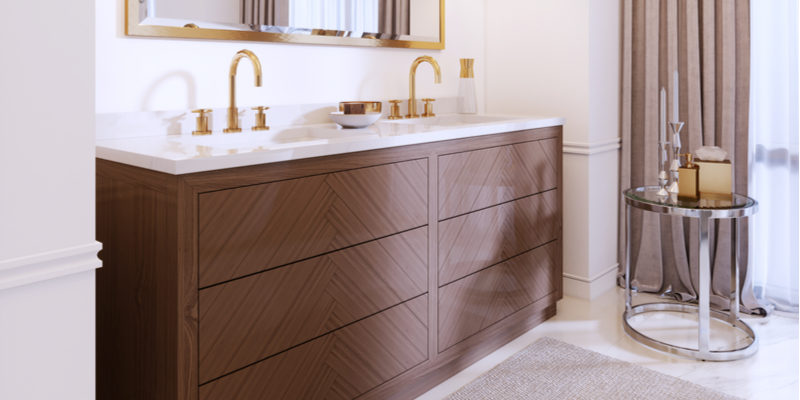If you are in the process of planning a new kitchen or in the midst of a kitchen remodel, you have likely been faced with the question of whether you should choose framed or frameless cabinets. Since your choice of kitchen cabinets help set the overall style and look of your kitchen, the design of the cabinet boxes can make all the difference depending on the style you choose – from classic, traditional to modern, contemporary, and all the options in between.
For kitchen cabinets, the question of framed or frameless cabinets often arises, so you need, first of all, to understand the difference to make an informed decision. The difference lies in the construction of the cabinet box. A framed cabinet features a support structure in front of the box. A frameless cabinet has no overlying structure there. Both framed and frameless cabinets can deliver quality and style but vary in appearance and function. Let’s explore and learn more about the differences as well as the pros and cons and which is better for your kitchen design.
Framed Versus Frameless Cabinets – An Overview
The benefits of framed cabinets include a lower cost as well as a variety of styles and materials from which to choose. Framed cabinets can also be mounted on walls which are, well, less than even. On the less than beneficial side, framed cabinets may require a longer installation period and are often less accessible and more difficult to use. Framed cabinets are also made of a lighter material and so may be less durable.
The benefits of frameless cabinets include faster installation, and fresh contemporary styles from which to choose. Frameless cabinets are often constructed of thicker, heavier materials offering greater durability. The disadvantages of frameless cabinets include a greater expense, with fewer styles and material choices available. When hung on uneven walls, frameless cabinets may warp.
Framed Versus Frameless Cabinets – In Detail
Cabinet doors are directly attached to the sidewall of frameless cabinets, so when cabinet doors are closed there is no reveal, thus giving frameless cabinets the well-known minimalist, modern look. Frameless cabinets are most likely to feature contemporary doors like Shaker doors or slab doors, further complementing fresh, clean design. With frameless cabinets there no center stile or overlay, making them an ideal option for open cabinetry without doors.
Framed cabinets offer varying levels of reveal including a full overlay with no reveal, a semi-overlay with a small reveal, or an inset door inside the reveal. Framed cabinets often feature more decorative styling such as raised panels and other embellishments. With framed cabinets, there is an obvious ledge and a center stile visible when the doors are open.
Though framed and frameless cabinets will offer the same amount of space within, the frameless cabinet promises more easily accessible space than a framed cabinet due to the ledge and stile within. As a result, the frameless cabinet provides unhampered access making the cabinet appear larger, easier to use and more functional.
Installation is another matter. In the United States, some installers may be less familiar with the installation process for frameless cabinets, which could make the installation process longer. Even so, there is very little difference in installation. For framed cabinets, adding additional shelves in a double cabinet requires maneuvering around the ledges and the center style. Hardware is different as well, with framed cabinets requiring longer screws for the frame than frameless cabinets which have no frame. During installation for both framed and frameless cabinets, lower cabinets are installed first, followed by upper cabinets. Kickboards, moldings, and end panels are installed last. Generally frameless cabinets are more costly, but both framed and frameless cabinets cost about the same for installation.

